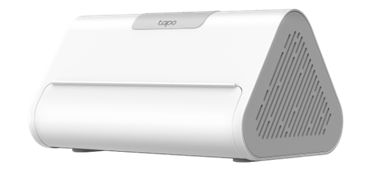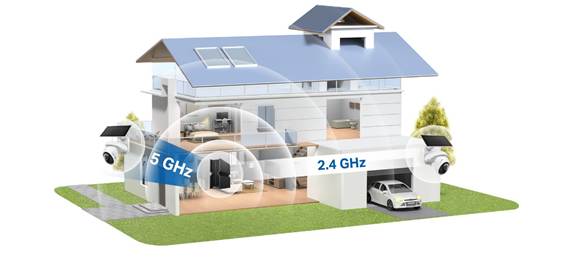5GHz Compatibility and Tapo Cameras (8/11/2025)
Tapo Cameras with 5GHz Compatibility (Updated 8/11/2025)
 The majority of Tapo Cameras currently only support 2.4GHz connections; however, a few of our latest cameras have added 5GHz compatibility due to the increased bandwidth needed for high-quality 4K recording and lag-free streaming.
The majority of Tapo Cameras currently only support 2.4GHz connections; however, a few of our latest cameras have added 5GHz compatibility due to the increased bandwidth needed for high-quality 4K recording and lag-free streaming.
Additional Models may be added in the future, so it is essential to always check your device’s specification page before purchasing for a specific feature.
Currently (8/11/25), the following cameras support 5GHz Connections:
Tapo C260 | Pan/Tilt AI Home Security Wi-Fi Camera | TP-Link
Tapo C460 KIT | Solar-Powered Security Camera Kit | TP-Link
Tapo C560WS | Outdoor Pan/Tilt Security Wi-Fi Camera | TP-Link
Tapo C660 KIT | Solar-Powered Pan/Tilt Security Camera Kit | TP-Link
5GHz Camera Considerations
5GHz Signal Interference and Attenuation
While 5GHz signals are more powerful and capable of significantly higher throughput, this comes at the cost of increased potential for interference from physical objects.
Once you move beyond dry-wall, significant decreases in 5GHz performance can be observed, with things such as Glass Windows or Brick Walls introducing 3 to 4 times the loss seen with 2.4GHz. In fact, our bodies block the 5GHz signal by an additional 2-3dB compared to 2.4GHz.¹
When using a 5GHz connection for your camera, try to limit the number of walls, appliances, or furniture between your camera and router. If you are struggling to see a strong 5GHz connection, check the path of the signal. Some walls, such as a fire wall between your home and garage, are infamous for blocking wireless signals.
Choosing a Location for Your 5GHz Camera
5GHz connections can travel quite far when not interfered with, but this changes dramatically once a real-world scenario is introduced.
For Outdoor 5GHz Cameras:
- With the fewest obstacles between your router and camera,
- Above 6 feet to prevent interference from people in your home or moving outside.
- Nearest to your router or closest mesh node as possible.
For Indoor 5GHz Cameras:
- Ensure that the number of walls does not block the signal from the router to the camera.
- Avoid placing the camera near/on other wireless devices (streaming devices, laptops, smart TVs)
- Consider mounting the camera on a wall or ceiling to avoid interference sources.
For significant distances/sources of interference, it may be necessary to add an outdoor Access Point or Mesh Node (Deco BE25-Outdoor) to ensure stable operation over 5GHz.
 H500 Hub Compatibility – The H500 is the only Hub to support a 5GHz connection currently; however, please keep in mind that setting a camera to use your hub’s wireless network will result in a 2.4GHz Connection between the Hub and Camera.
H500 Hub Compatibility – The H500 is the only Hub to support a 5GHz connection currently; however, please keep in mind that setting a camera to use your hub’s wireless network will result in a 2.4GHz Connection between the Hub and Camera.
¹(https://www.motorolasolutions.com/content/dam/msi/docs/business/_documents/static_files/interference_tb_0809.pdf ) pg11
△5 GHz band has more bandwidth but has decreased Wi-Fi range compared to 2.4 GHz band. Ensure that your router is in range to use the 5 GHz connection.

